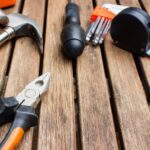Roof fixing is an essential part of homeownership that ensures the safety and longevity of your property. Whether you have a leaky roof, missing shingles, or any other roofing issue, addressing the problem promptly is crucial to prevent further damage. In this comprehensive guide, I will walk you through everything you need to know about fixing your roof, from identifying common problems to executing repairs safely and effectively.
Related Ads:
Understanding the Importance of Roof Fixing
Taking care of your roof is one of the most important aspects of maintaining a healthy home. A well-maintained roof not only protects your property from the elements but also enhances its curb appeal and value. Ignoring roof issues can lead to costly repairs down the line, as water damage and structural issues can quickly escalate if left unchecked. Regular roof fixing and maintenance can help you avoid these problems and ensure that your roof remains in top condition for years to come. By addressing small issues early on, you can prevent them from turning into major headaches that require extensive repairs or even a full roof replacement.
Signs That Your Roof Needs Fixing
Knowing when your roof needs fixing is key to preventing extensive damage. Some common signs that indicate your roof may need repairs include:
- Leaky Ceilings: If you notice water stains or dripping water on your ceilings, it could be a sign of a roof leak.
- Missing or Damaged Shingles: Missing, curling, or cracked shingles can leave your roof vulnerable to water penetration.
- Sagging Roof: A sagging roof may indicate structural issues that need immediate attention.
- Visible Light: If you can see daylight through your roof boards, there may be gaps or holes that need to be repaired.
- Granules in the Gutters: Finding granules from the shingles in your gutters is a sign of shingle wear and potential roof damage.
- Mold or Mildew Growth: Mold or mildew on your roof can indicate moisture issues and the need for repairs. If you notice any of these signs, it’s important to address them promptly to prevent further damage to your roof and home.
Common Roofing Problems that Require Fixing
Roofs can develop a variety of issues over time, ranging from minor wear and tear to severe damage. Some common roofing problems that may require fixing include:
- Roof Leaks: Leaks can occur due to damaged shingles, flashing, or improper installation.
- Missing Shingles: Missing shingles leave your roof vulnerable to water damage and should be replaced promptly.
- Damaged Flashing: Damaged flashing around vents, chimneys, and skylights can lead to leaks and should be repaired.
- Clogged Gutters: Clogged gutters can cause water to back up and damage your roof and home.
- Pooled Water: Pooled water on your roof can lead to leaks, rot, and structural damage.
- Ice Dams: Ice dams can form on your roof in cold weather, causing water to seep under shingles and lead to leaks. Identifying these common problems early on can help you address them before they escalate into more serious issues that require costly repairs.
DIY vs. Hiring a Professional for Roof Fixing
When it comes to fixing your roof, you may be wondering whether to tackle the job yourself or hire a professional roofer. While some minor repairs can be done DIY, more complex issues are best left to the experts. Here are some factors to consider when deciding between DIY and professional roof fixing:
DIY Roof Fixing
Pros:
- Cost-effective
- Allows you to learn new skills
- Can be done on your own schedule
Cons:
- Safety risks
- Lack of expertise
- Limited warranty on repairs If you’re considering DIY roof fixing, make sure to assess the extent of the damage and your own comfort level with the repairs. Safety should always be a top priority when working on your roof, so if you’re unsure about the job, it’s best to consult a professional.
Hiring a Professional
Pros:
- Expertise and experience
- Quality workmanship
- Warranty on repairs
Cons:
- Higher cost
- Scheduling constraints
- Dependence on external help Professional roofers have the skills and equipment necessary to handle a wide range of roofing issues safely and effectively. By hiring a professional, you can ensure that your roof is repaired to the highest standards and that the work is guaranteed.
Tools and Equipment Needed for Roof Fixing
Before starting any roof fixing project, it’s important to have the right tools and equipment on hand. Some essential items you may need include:
- Safety Harness: A safety harness is crucial for working on steep roofs and preventing falls.
- Ladder: A sturdy ladder is essential for accessing your roof safely.
- Roofing Nails and Hammer: These are used for securing shingles and other roofing materials.
- Roofing Cement: Roofing cement is used to seal flashing and other areas prone to leaks.
- Utility Knife: A utility knife is handy for cutting shingles and other roofing materials.
- Roofing Shovel: A roofing shovel is used to remove old shingles and debris from the roof. These are just a few of the tools and equipment you may need for roof fixing. Depending on the specific repairs required, you may need additional items to complete the job.
Step-by-Step Guide to Fixing Your Roof
If you’ve decided to tackle roof fixing on your own, here is a step-by-step guide to help you through the process:
Step 1: Safety First
Before starting any work on your roof, make sure to prioritize safety. Wear a safety harness, sturdy shoes, and eye protection to prevent accidents and injuries.
Step 2: Inspect the Roof
Carefully inspect your roof for damage, paying attention to missing shingles, cracks, and signs of leaks. Mark areas that need repairs and assess the extent of the damage.
Step 3: Gather Materials
Collect all the tools and materials you’ll need for the repairs, including shingles, roofing cement, nails, and other supplies. Make sure you have everything on hand before starting the job.
Step 4: Remove Damaged Shingles
Carefully remove damaged or missing shingles by lifting the edges and sliding them out. Be gentle to avoid causing further damage to the surrounding shingles.
Step 5: Replace Shingles
Slide new shingles into place, securing them with roofing nails and sealing the edges with roofing cement. Make sure the new shingles are properly aligned with the existing ones.
Step 6: Seal Flashing
Inspect flashing around vents, chimneys, and skylights for damage and leaks. Seal any gaps with roofing cement to prevent water intrusion.
Step 7: Clean Up
Once the repairs are complete, clean up any debris and leftover materials from the roof. Dispose of old shingles and nails properly to avoid creating a safety hazard.
Step 8: Inspection
After completing the repairs, inspect your roof to ensure that the fixes are holding up and that there are no new issues. Check for leaks and other signs of damage to verify that the repairs were successful. Following these steps can help you address common roofing issues and keep your roof in top condition.
Safety Precautions for Roof Fixing
Working on your roof can be dangerous, so it’s essential to take proper safety precautions to prevent accidents and injuries. Here are some safety tips to keep in mind when fixing your roof:
- Always wear a safety harness when working on steep roofs.
- Use a sturdy ladder to access your roof safely.
- Wear non-slip shoes with good traction to prevent falls.
- Do not work on the roof in wet or windy conditions.
- Be mindful of electrical wires and other hazards on the roof.
- Have a spotter on the ground to assist you and call for help in case of an emergency. By prioritizing safety and following best practices, you can reduce the risk of accidents and ensure a successful roof fixing project.
Tips for Maintaining a Healthy Roof
Preventive maintenance is key to keeping your roof in top condition and avoiding costly repairs. Here are some tips for maintaining a healthy roof:
- Regular Inspections: Inspect your roof at least twice a year for signs of damage, such as missing shingles, leaks, or sagging.
- Clean Gutters: Keep your gutters clean and free of debris to prevent water backups and damage to your roof.
- Trim Trees: Trim overhanging branches to prevent them from rubbing against the roof and causing damage.
- Remove Snow: In snowy climates, remove snow from your roof to prevent ice dams and water damage.
- Check for Pests: Look for signs of pests, such as birds or rodents, that may be damaging your roof. By staying proactive and addressing issues promptly, you can extend the life of your roof and avoid major repairs down the line.
The Cost of Roof Fixing
The cost of fixing your roof can vary depending on the extent of the damage, the materials needed, and whether you hire a professional or opt for a DIY approach. On average, homeowners can expect to pay anywhere from $300 to $1,000 for minor roof repairs, such as fixing a leak or replacing shingles. For more extensive repairs, such as repairing structural damage or replacing a large portion of the roof, costs can range from $1,000 to $10,000 or more. The cost of fixing a roof leak, for example, can be between $300 and $1,500, depending on the severity of the leak and the repairs needed. Keep in mind that these are rough estimates, and the actual cost of roof fixing will depend on various factors specific to your situation.
How Long Does Roof Fixing Take?
The time it takes to fix a roof can vary depending on the extent of the damage, the size of the roof, and the complexity of the repairs. In general, minor roof repairs, such as fixing a leak or replacing a few shingles, can be completed in a day or two. More extensive repairs, such as replacing a large section of the roof or repairing structural damage, may take several days to complete. Factors such as weather conditions, access to the roof, and the availability of materials can also impact the timeline for roof fixing. It’s important to be patient and thorough when fixing your roof to ensure that the repairs are done correctly and will stand the test of time.
FAQs
What are the common causes of roof leaks?
Roof leaks can be caused by various factors, including damaged shingles, flashing, vents, or skylights. Poor installation, age-related wear and tear, and severe weather can also contribute to roof leaks.
How often should I inspect my roof for damages?
It’s recommended to inspect your roof at least twice a year, ideally in the spring and fall. Additionally, after severe weather events such as storms or high winds, it’s a good idea to check your roof for any signs of damage.
Can I fix a roof leak on my own?
Minor roof leaks can often be fixed DIY, but it’s important to assess the extent of the damage and your own comfort level with the repairs. If you’re unsure or if the leak is extensive, it’s best to consult a professional roofer.
Is it necessary to replace the entire roof if there is a leak?
In many cases, it’s not necessary to replace the entire roof if there is a leak. Depending on the cause and extent of the leak, targeted repairs may be all that is needed to fix the issue and prevent further damage.
How can I prevent roof damages during extreme weather conditions?
To prevent roof damages during extreme weather conditions, make sure your roof is properly maintained and free of debris. Trim overhanging branches, secure loose shingles, and inspect your roof regularly for signs of damage.
Are there any eco-friendly options for roof fixing?
Yes, there are several eco-friendly options for roof fixing, including using sustainable roofing materials such as metal, clay, or recycled shingles. Additionally, green roofs, solar panels, and cool roofs are environmentally friendly choices for roofing.
Conclusion
In conclusion, roof fixing is an essential part of maintaining a healthy home and protecting your property from the elements. By understanding the signs of roof damage, knowing when to DIY and when to hire a professional, and following proper safety precautions, you can address common roofing issues effectively and prevent costly repairs in the future. Remember to stay proactive with roof maintenance, inspect your roof regularly, and address issues promptly to keep your roof in top condition for years to come.


